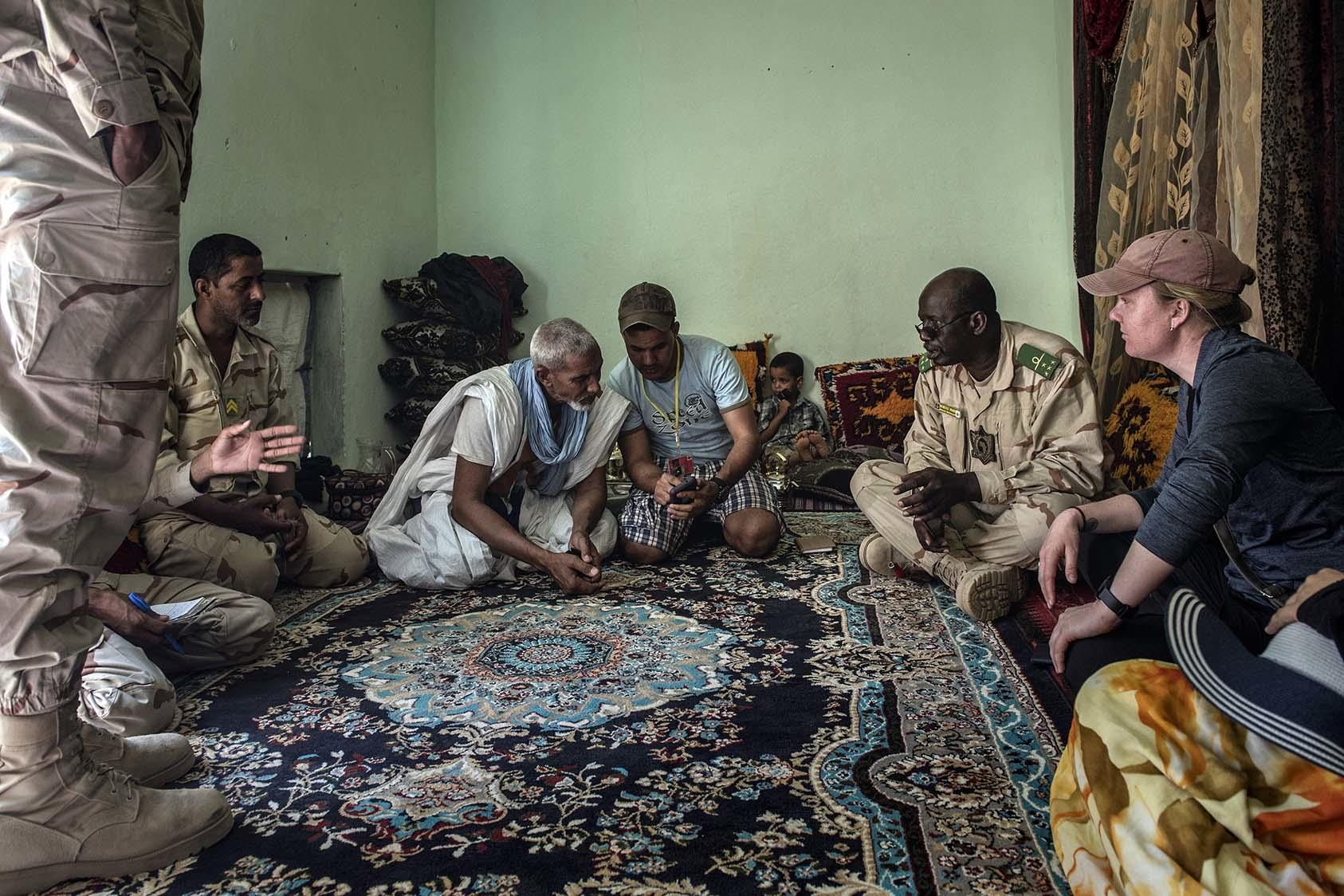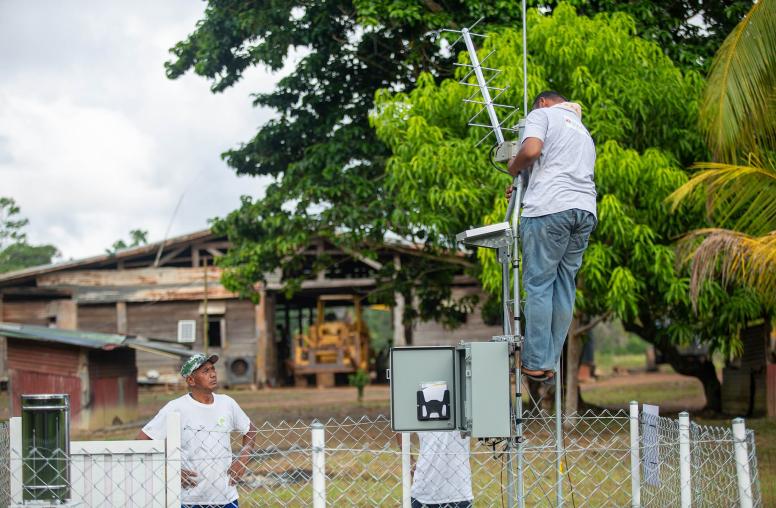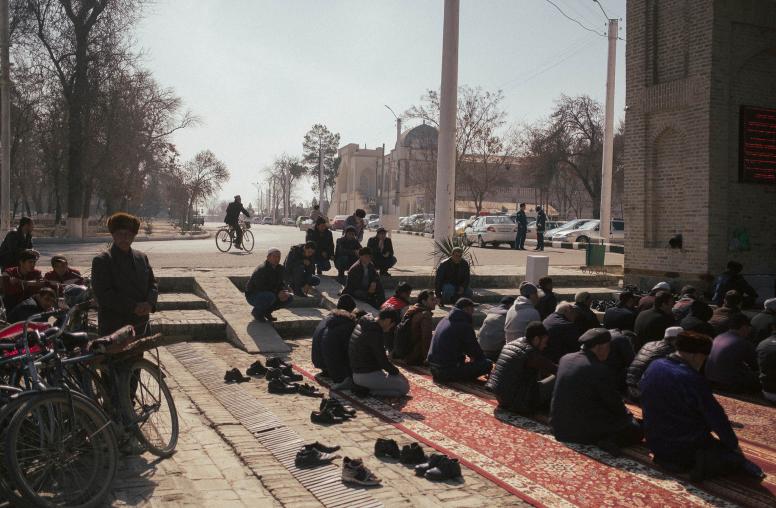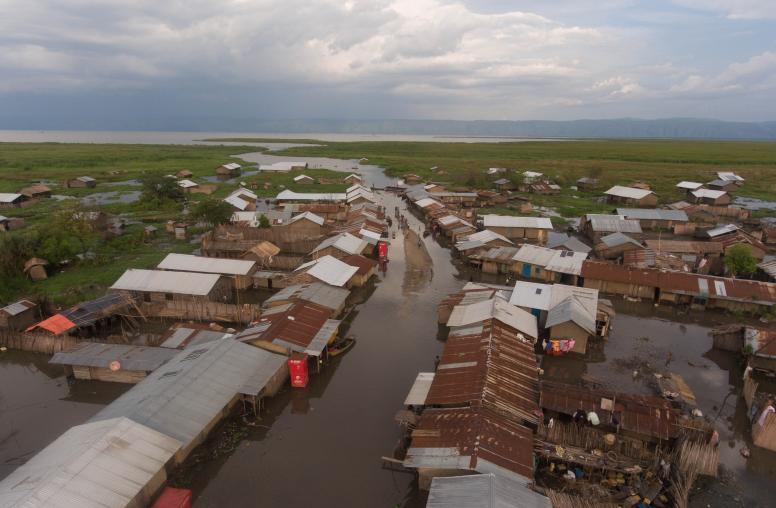Three Ways to Make Communities Count in Combatting Violent Extremism in Africa
Efforts to prevent and counter violent extremism too often ignore the experiences of those most affected: local communities.
Nearly 20 years since the 9/11 attacks, the global community continues to struggle with violent extremism and terrorism. While much of the focus in the immediate aftermath was on the Middle East and Afghanistan, sub-Saharan Africa has drawn increasing attention in the last decade. Seven of the world’s top 10 countries facing the greatest violent extremist threat are in Africa, with the expansion of the Islamic State group (ISIS) and al-Qaida-affiliated groups on the continent. Efforts to combat violent extremism in Africa are now at a critical juncture. But this presents an opportunity to rethink these efforts. A tailored focus on local communities will be key in building better approaches to deal with the violent extremist scourge.

Refocusing on Communities
Although preventing and countering violent extremism (P/CVE) programs and policies claim to focus on communities, militarized tactics tend to dominate such efforts — and with little progress to show for it. In order for these policies to be more effective at managing insecurity on the continent, it is essential that policymakers and practitioners center the realities and concerns of local communities. There is a need for policies to deepen community engagement in line with three interrelated ideas that can guide strategic P/CVE thinking.
First, violent extremism (and its root causes) are felt most profoundly and best understood by affected communities. Second, policymakers should prioritize consultation with communities and respond in a way that is tailored to their unique expectations for addressing security threats. And third, there needs to be a recognition of the responsibility researchers, experts and policymakers have to communities. Among other aspects, attention should be paid to ethical concerns of the impact of P/CVE policies, bearing in mind the ways in which these policies affect individuals of different genders in unique ways.
1. Recognize communities are most impacted by violent extremism.
Communities suffer the worst impact of violent extremism. They experience this impact in the loss of lives and livelihoods, but also must deal with the specter of violence posed by terrorism, not knowing when the next attack might occur. One of the deadliest terror attacks experienced in the last decade occurred in October 2017 in the Somali capital, Mogadishu, where over 500 individuals — community members — lost their lives. Al-Shabaab, which perpetrated this heinous attack, continues to attack security personnel and local communities across the Horn of Africa. The threat of violent extremism to communities also affects populations across Nigeria in the Lake Chad Basin, Mali in the Sahel and, more increasingly, Mozambique in southern Africa. In the Nigerian context, the Boko Haram crisis has greatly affected communities’ access to arable land. This has created a degree of food insecurity and in the current period, the U.N. Office for the Coordination of Humanitarian Affairs (UNOCHA) projects that up to 5.1 million people risk being food insecure this year. In the Lake Chad Basin alone, UNOCHA further recorded at least 2.6 million internally displaced persons in late 2020, largely due to the impact of violent extremism.
Across the continent, part of understanding the impact of violent extremism on populations involves allowing local communities to articulate their perceptions and experiences to policymakers in their own words. A 2020 study by the Institute for Security Studies in Nairobi, Wajir and Kwale counties in Kenya highlighted the potential contribution of local communities to P/CVE, with focus on how policymakers can enhance the resilience currently demonstrated by affected communities if they are listened to. Clearly, the lack of a coherent and community-focused strategy among those combatting violent extremism on the continent, be they state or non-state actors, contributes to the exclusion of communities and their needs. The expansion of violent extremist groups and their impact suggests that there is a missing link in formulating effective policy. Affected communities are at the heart of understanding how to address this and community buy-in is essential.
2. Respond to community needs through true collaboration.
Too often policymakers set their own objectives and expectations for P/CVE programs without consulting individuals who will be affected by these policies. In instances where communities are consulted it is rarely a true collaboration in which policymakers listen to the experiences of communities. Marginalized groups, like women, are sometimes “consulted” as a box-checking exercise, but sidelined when it comes to program design or implementation. For example, Rehema Zaid, who works on gender and P/CVE issues in Kenya, shared in a conversation with one of these authors, that “even those people who are really advocating for women’s participation still don’t believe a woman can take leadership.” She described a dynamic in which women are the first people consulted when policymakers are designing P/CVE programs, but then men are given leadership roles.
Some of the causes of this disconnect between local communities and policymakers are based on institutional challenges that occur when policymakers have a set understanding (based on policy priorities and funding) of what violent extremist threats are and receive funding and directives to combat these perceived threats. However, local communities, and diverse groups within those communities, may have different ideas about what their greatest security threats are. Policymakers should have a more flexible and inclusive approach. Problems related to violent extremism, and security more broadly, vary across communities and community members must have a voice within the policymaking process.
An example of a mismatch between policymakers’ understanding of security threats related to violent extremism and communities' experiences with these threats is exemplified in the informal settlements of Nairobi, Kenya. Al-Shabaab has actively recruited in these informal settlements, yet in interviews with one of the authors, communities wanted to speak less about the threats from terrorist recruitment and instead focused on their concerns about the forced disappearances occurring in their communities. This type of feedback from the community risks being disregarded because it doesn’t necessarily focus on al-Shabaab as a threat.
3. Realize the responsibility to communities.
Policymakers, the research community and other practitioners have interconnected responsibilities to communities affected by violent extremism. These responsibilities don’t end once a program or policy has been implemented, but are key throughout all stages of engagement. There are key ethical questions to consider. When communities are consulted, are their views presented in authentic ways and not misconstrued through the lens of prejudice? This awareness equally applies to the way visual representations of communities are reflected. To what extent are such images influenced by notions of vulnerability and power dynamics which can sometimes have a bearing on the research and policy process?
Beyond this, responsibility should also be understood in terms of how externally imposed policies and programs have the potential to do harm to individuals in the communities where they are implemented. In particular, P/CVE policies can have the unintended effect of harming some women and girls (often depending on age, religion or ethnicity). The U.N. special rapporteur focused on human rights while countering terrorism labels the harmful effects of these policies as “gendered security harms,” arguing that the harms stem from the ways in which these policies transform and securitize the domestic and private lives of individuals, groups and communities. Importantly, many of the costs and harms are not visible to outsiders because they are felt in the private sphere, particularly by women and girls. For example, the special rapporteur draws attention to the harms women face when motherhood is associated with P/CVE. When mothers “fail” to prevent their children from engaging in violent extremism they are seen as particularly blameworthy and a “good mother” is one who partners with the state in P/CVE efforts.
For these gendered security harms to be made visible to outside communities, experts designing and implementing P/CVE policies and programs need to solicit and incorporate feedback from women and girls from different ethnic, religious and socioeconomic groups in the societies where they operate. This is not only to comply with human rights and prevent communities from being unintentionally harmed, but also because it leads to more effective policies and programs. If P/CVE policies end up harming women in a community, they will not be effective allies in such efforts.
Next Steps
Experts streamlining P/CVE approaches should not be oblivious of these concerns in relation to engaging with communities. There is a role that external actors such as the United States, in partnership with African countries, can play in a framework that is mutually beneficial. Such frameworks should facilitate sharing experience, knowledge and capabilities where relevant. Although military engagements should not be entirely discounted, communities and their experiences should be prioritized and the leadership in African countries should oversee and take ownership of these efforts. This is where the African Union has a vital role to play in terms of providing the inspiration, will and structured engagement on a continental level for Africans.
Dr. Akinola Olojo is a senior researcher in the Lake Chad Basin Program at the Institute for Security Studies. Dr. Phoebe Donnelly is a research fellow at the International Peace Institute and a member of the RESOLVE Research Advisory Council.



